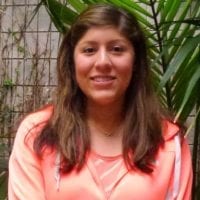
Exploring gene function in AM Symbiosis
The purpose of my research this summer was to investigate the potential role of interesting fungal genes in the Arbuscular Mycorrhizal (AM) symbiosis. AM fungi are obligate biotrophs; dependent upon another organism for nutrients. AM symbiosis occurs between vascular flowering plants and Glomeromycota fungi. Little is known about the fungal genes that control AM development. In the Harrison lab I was able to verify the expression of genes in Gigaspora gigantea and Glomus intraradices, AM fungi, with gene-specific primers. I verified the genes are fungal through PCR on their corresponding AM fungal genomic DNA, and then showed their expression with reverse transcriptase (RT) PCR using AM fungi inoculated Medicago truncatula roots. Agrobacterium rhizogenes was used to generate M. truncatula plants with transgenic roots overexpressing the G. intraradices gene under an AM-specific promoter. This was done by making a compatible binary vector via Gateway© cloning system. Seeds were first germinated on a petri plate and transplanted to cones where they are inoculated with G. intraradices fungal spores and harvested after 2-3 weeks. My next step was staining roots for the presence of intraradical colonization and visualizing the AM phenotype with a microscope. In the case that the gene is important for AM symbiosis, I predicted that overexpression would have a positive impact on AM development and promote greater fungal colonization.
My Experience
My experience in the Harrison lab has been beneficial for the next step in my academic career. With the help of my mentor, I’ve learned several new techniques: colony PCR, RNA extraction, RNAi constructs, Agrobacterium root transformation, staining and visualization of AM fungi within roots, and staining for GUS expression. The other lab members also made my experience enjoyable, even when a mistake was made. I plan on applying for graduate schools this fall, and I am interested in programs that specialize in Plant Pathology and Plant Breeding and Genetics.
